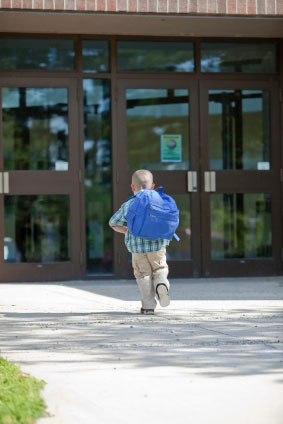LA students more true to their charter schools than teachers, studies say
Teachers in Los Angeles Unified School District’s charter schools are up to three times more likely to leave their school at year’s end compared with their peers in other LAUSD schools, according to a UC Berkeley report released today.
July 19, 2011
Teachers in Los Angeles Unified School District’s charter schools are up to three times more likely to leave their school at year’s end compared with their peers in other LAUSD schools, according to a University of California, Berkeley, report released today (Tuesday, July 19).
The study tracked teacher movement within the nation’s second largest school district over a seven-year period. The results were set to be released during a seminar at the district’s downtown headquarters along with a second UC Berkeley study that looked at trends in student loyalty to their schools.
The researchers said that while the Los Angeles school system faces its own unique challenges, their study findings hold implications for retaining and motivating teachers in big urban districts across the nation. The Obama administration’s press to promote or fire teachers based on student performance, for example, is complicated when teachers switch schools, researchers said.
The UC Berkeley team studied teacher turnover during the boom years of 2002 to 2009, a period when the count of Los Angeles charter schools climbed from 53 to 157 campuses. Charter schools are small and independent, but receive taxpayer funding.
“Teacher turnover rates are alarmingly high in the charter secondary schools, which have consistently reported these basic data,” said UC Berkeley assistant professor of education and study co-author Xiaoxia Newton.
She said these new findings echoed earlier results showing that high rates of teacher turnover are associated with school and neighborhood characteristics, such as teaching a large proportion of children from poor families. Yet the new Los Angeles study found that family poverty increased the likelihood of teacher turnover only at the secondary level, not at the elementary level.
Researchers also found that not only were the odds of secondary charter teachers exiting their schools between school years much greater than the odds of teacher departure in regular secondary public schools, but that elementary charter teachers were 33 percent more likely to leave than other elementary public school teachers.
“Understanding who leaves, when, and under what conditions is important for policy makers who hope to retain and motivate strong teachers, especially in low-income communities and where shortages exist, like for math and science teachers,” said Newton.
The study authors said that more research is needed to better understand why teachers leave and the implications of poor teacher retention rates for issues ranging from school overcrowding, teacher evaluation and accountability, and the equitable distribution of quality teachers.

A new study shows Los Angeles Unified’s charter school students are much less likely to leave than their counterparts in other district schools.
Meanwhile, charter students and families were up to 80 percent less likely to leave their school at year’s end compared with elementary or secondary school pupils at regular campuses, according to the second UC Berkeley study.
“While charter teachers are churning in and out of where they work, charter students and parents seem more loyal to their school choice,” said Luke Dauter, a UC Berkeley Ph.D. student in sociology and co-author of the second study.
Dauter said that the findings may be connected to the Los Angeles school district’s $27 billion investment in new facilities, which was launched in 2001. Students attending a newly opened high school were almost one-third less likely to leave that campus compared with students attending older campuses, according to Dauter’s study.
He said that the district’s still severely overcrowded campuses continued to lose students and families during the study period, including those flocking to burgeoning charter schools.
The tandem studies are part of an ongoing effort by UC Berkeley’s Graduate School of Education and the campus’s Center for Cities and Schools to assess teacher retention and student achievement across charter, magnet, pilot and newly constructed schools from Pacific Palisades to East Los Angeles.
The researchers cautioned that trends for charter teachers and students are based on partial data, given that up to one-third of new charters failed to report their retention rates for students or teachers to district officials toward the end of the study period.
Other findings highlighted in the reports include:
- Latino teachers and students were significantly less likely to leave one school for another, whether or not their school was a charter school.
- African American students were up to a third more like to exit at year’s end compared with Latino pupils. Many blacks migrated to rapidly growing charter schools.
- While staff turnover was much higher for charter teachers overall, elementary charter teachers under the age of 30 were less likely to move than their counterparts in regular elementary Los Angeles schools.
- Magnet elementary schools, which offer more specialized courses or curricula, experienced little student turnover.
Future reports by UC Berkeley researchers for LAUSD will focus on the effects of the district’s schools on student achievement.
The research has been supported by the Ford, Hewlett, and Spencer foundations. UC Berkeley education professor Bruce Fuller and Jeff Vincent, deputy director of the Center for Cities and Schools, coordinate the research, while LAUSD contributes staff support to organize and share data. Policy Analysis for California Education (PACE) – based at UC Berkeley, Stanford University and the University of Southern California – assists with logistics and research.